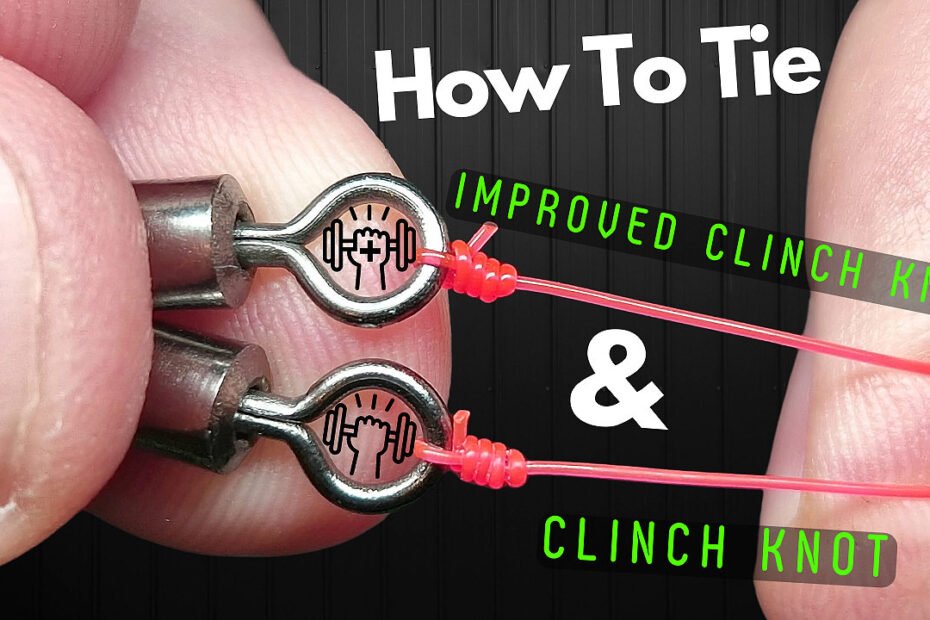Fishing can be a fun and rewarding hobby, but it requires a lot of patience and skill. One of the most essential skills that any angler needs to learn is how to tie a good knot. With a strong knot, your line can easily break, and you can retain your catch. This article will focus on two popular knots: the clinch knot and the improved clinch knot. Both are reliable knots, but they have their differences. Let’s take a closer look.
What is a Clinch Knot?
The clinch knot is one of the most popular fishing knots. It is a simple knot that is easy to tie and is strong enough to hold most fish. The knot is also known as the “fisherman’s knot” or the “half blood knot”. It is often used to tie hooks, swivels, and lures to the fishing line.
How to Tie a Clinch Knot
To tie a clinch knot, follow these steps:
- Thread the end of your fishing line through the eye of the hook or lure.
- Bring the line back over itself and wrap it around the main line five or six times.
- Thread the end of the line back through the loop near the eye of the hook or lure.
- Moisten the knot and tighten it by pulling on both ends of the line.
What is an Improved Clinch Knot?
The improved clinch knot is a variation of the clinch knot. It is similar to the original knot but has an additional step that makes it more secure. The knot is often used for heavier fishing lines and larger fish.
How to Tie an Improved Clinch Knot
To tie an improved clinch knot, follow these steps:
- Thread the end of your fishing line through the eye of the hook or lure.
- Bring the line back over itself and wrap it around the main line five or six times.
- After wrapping, bring the end of the line through the loop created behind the wrapped section.
- Then, get the end of the line through the loop made in the first step.
- Moisten the knot and tighten it by pulling on both ends of the line.
Differences Between the Clinch Knot and the Improved Clinch Knot
The main difference between the clinch knot and the improved clinch knot is the additional step in the latter. The improved clinch knot has an extra loop, making it more secure and robust. The improved clinch knot is better suited for larger fish and heavier fishing lines. However, the clinch knot is easier to tie and is still strong enough for most fishing situations.
Which Knot Should You Use?
The choice between the clinch knot and the improved clinch knot depends on your fishing situation. The regular clinch knot should be sufficient if you use lighter fishing lines and smaller fish. If you use heavier lines and target larger fish, the improved clinch knot is the better option.
We are happy to provide a step-by-step guide to tying the clinch knot and the improved clinch knot for fishing. We understand that sometimes it’s easier to learn by watching someone do it, so we have embedded a video titled “Step-by-Step Guide to Tie the Clinch Knot and Improved Clinch Knot for Fishing” in this article. This video will walk you through the process of tying these knots, from start to finish, so that you can master them with ease. So, sit back, relax, and follow along with the video to learn how to tie these knots like a pro.
FAQs:
Q: Can the clinch knot and the improved clinch knot be used for all types of fishing lines ?
A: Both the clinch knot and the improved clinch knot can be used with most fishing lines, including monofilament, fluorocarbon, and braided lines. However, it’s important to note that the number of wraps you use when tying the knot can vary depending on the type of line you are using. For example, braided lines may require more wraps than monofilament lines to ensure a secure knot.
Q: Can the clinch knot and the improved clinch knot be used for all hooks and lures?
A: Yes, both knots can be used with most types of hooks and lures. However, choosing the appropriate knot size is essential based on the size and strength of the hook or lure you are using. You should also adjust the number of wraps you use based on the thickness of the fishing line and the size of the hook or lure.
Q: Is it necessary to moisten the knot before tightening it?
A: Yes, it’s important to moisten the knot with water or saliva before tightening it. This helps to reduce friction and heat, weakening the line and making it more prone to breaking. It also ensures that the knot tightens properly and holds securely.
Conclusion:
Regarding fishing knots, the clinch knot and the improved clinch knot are both reliable options. The choice between the two depends on the fishing situation, including the type of fishing line, hook or lure size, and the size of the fish you target. Understanding the differences between these two knots and practicing tying them can improve your chances of landing a big catch on your next fishing trip.
